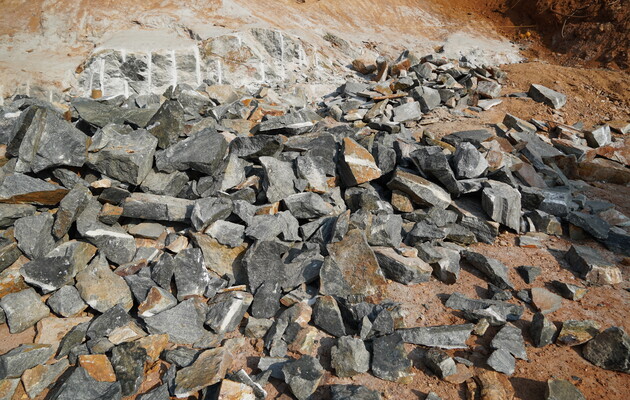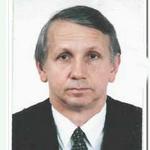Ukrainian Lithium: What Are the Prospects?
In view of the transition to electric vehicles and the use of lithium batteries, the global lithium industry is developing rapidly. The growth in demand for lithium has led to a sharp increase in its price on world markets. The price of lithium carbonate now exceeds $70,000 per ton, although recently it was "only" 13,000. Since Ukraine is one of the few countries with large lithium reserves (according to estimates, up to 10% of world reserves) and is in dire need of resources for economic development, conversations about the prospects for the development of the lithium industry have become noticeably more frequent.
However, to begin with, it is necessary to come down to earth from the clouds. Despite large lithium reserves, Ukraine will be able neither to produce lithium products nor trade in ore concentrate in the foreseeable future, since Ukrainian lithium deposits are unique, and there are no technologies for obtaining lithium from similar ores in the world. Ukrainian lithium concentrate cannot be used by other countries due to the lack of technologies for its processing.
If the government is genuinely interested in developing lithium deposits and making the country one of the world’s major lithium-producing countries, it is necessary:
- firstly, to declassify the Soviet data of geological exploration of lithium deposits and disseminate the information to possible investors through all means;
- secondly, to carry out budget-funded preliminary exploration of deposits according to international standards;
- thirdly, to channel scientific efforts to creating a technology for beneficiating and obtaining lithium-containing products from Ukrainian ores;
- fourthly, to create favorable conditions for attracting investments in the development of deposits and the production of lithium products.
As you can see, there is a whole array of tasks, and not the easiest or cheapest ones at that.
The global lithium production is growing constantly and significantly. Whereas in 2021, 460,000 tons of lithium carbonate were consumed in the world, according to forecasts, the need for it will reach 6 million tons by 2030. At the same time, 60% of lithium is used in the form of salts, mainly carbonates, 30% as lithium minerals and 10% as metallic lithium (see figure).
Lithium compounds from minerals are obtained by hydrometallurgical processing of concentrates. The main mineral, spodumene, is processed using limestone, sulfate, and sulfuric acid methods. When extracting lithium from salts, the solution evaporates in the sun, and the resulting mixture is processed. Thanks to this method, obtaining lithium is cheaper than from minerals, but the process is longer and takes up to two years.
Other new and promising methods are obtaining lithium from thermal waters (US, Germany), sea water (Saudi Arabia), spent lithium-ion batteries of which there will be more than 2.5 million tons by 2040.
In Ukraine, significant lithium reserves were discovered in the 1980s at two deposits — Polokhivske (petalite ores, Kirovohrad region) and Shevchenkivske (spodumene-petalite ores, Donetsk region), as well as at the Dobra site (petalite-spodumene ores, Kirovohrad region). At the Kruta Balka site (Zaporizhia region), lithium was discovered as part of complex rare metal ores. The Shevchenkivske deposit and the Dobra site are currently in the temporarily occupied territories.
The Polokhivske deposit consists of microcline-albite-petalite pegmatoid granites. The composition is as follows: petalite (80–90%), spodumene and triphyllin (totalling 10–15%). Pegmatites of the Polokhiv deposit also contain niobium, tantalum and cesium. Reserves amounted to 27,774,000 tons in the C1-C2 category and 4,746,000 tons in the P1 category.
Reserves of the Shevchenkivske deposit amount to 13.8 million tons of lithium ores. The accompanying elements are tantalum, niobium, beryllium ores, quartz, feldspar, and muscovite. Lithium ore reserves of the Shevchenkivske deposit by categories is as follows: C1 — 528,000 tons, C2 — 1,574,700 tons, C2pb — 163,800 tons. Reserves of tantalum, niobium, beryllium oxides are 4,863,600 tons.
At the Dobra site, there are lithium ores and the accompanying ones, namely tantalum, niobium, rubidium, beryllium, tin, cesium-containing, tungsten, and gold ores. At the Kruta Balka site, the main minerals are tantalum, niobium, lithium, rubidium, cesium-containing ores; the accompanying ones include spodumene, feldspar, quartz, muscovite, granodiorite, vein quartz, and amphibolite. The Yesaulivske deposit discovered in Donbas is represented by kukeite, contains about 3% of lithium oxide Li2O and is of industrial importance.
In Ukraine, lithium is found in the form of solid mineral rocks, so the production process of obtaining the final product consists of a number of stages:
- mining of ore by mine or quarry (Shevchenkivskoe deposit and Kruta Balka site) method. The quarry method of extraction is cheaper than the mine method and carries a smaller threat to the environment;
- beneficiation of mined ore and production of lithium concentrate. The presence of lithium in solid rock requires crushing and processing to form waste;
- production of lithium carbonate or hydroxide at a special chemical plant;
- battery manufacturing.
The problem of Ukrainian lithium is that each deposit is unique and has no analogues in the world. All deposits of Ukraine are complex and, in addition to lithium, they also contain other ores of expensive and rare materials. Therefore, the ore processing technology needs to be prepared for the entire range of materials. For example, the Kruta Balka site is primarily a deposit of tantalum and niobium, with lithium claiming only the third spot. The associated materials present in the ore are rare, in low concentrations, but no less expensive than lithium. In addition to the aforementioned tantalum and niobium, Ukrainian deposits also contain beryllium, rubidium, cesium, tin, and tungsten. At the Dobra site, there is even gold with the content of up to 2.5 g/ton, which was exactly the aim of geological prospecting during the Soviet times.
The world's current technologies for processing ores and minerals provide for the extraction of lithium from spodumene, and in Ukraine the deposits are petalite, petalite-spodumene or tantalum, niobium, rubidium or even the mineral kukeite. This makes it impossible to use technologies available in the world to obtain products and requires the development of new ore beneficiation and processing technologies for each deposit. Due to the uniqueness of Ukrainian deposits, it is impossible to trade ore concentrates, because nobody needs Ukrainian ore concentrate anymore. Therefore, it is necessary to build a domestic chain from ore extraction to production.
Preliminary geological exploration of deposits was launched in 1967. According to Ukrainian legislation, deposits are explored and have proven reserves. That said, no one will invest large sums of money based on information obtained half a century ago. Besides, in the opinion of a foreign investor, the Soviet materials are worthless since they do not meet international standards. In Ukraine, there are no deposits evaluated according to such standards. Therefore, for negotiations with investors, it is necessary: to confirm the drilling data from the times of the USSR and conduct an additional study in accordance with international standards with the performance of chemical research in internationally certified laboratories.
The Ukrainian lithium mining procedure includes the following stages:
- obtaining permission to start geological exploration — 1 year;
- carrying out geological exploration of deposits according to international standards to confirm data from the times of the USSR. It will take 3–5 years and $10–15 million for one deposit. On the basis of preliminary exploration, reserves are approved and a field development project is drawn up. This will be the basis for transferring a special permit for exploration into a special permit for mining;
- obtaining a special permit to start mining — 2 years;
- developing laboratory technology for beneficiation and processing of ore into lithium compounds. This takes 2 years and $3–5 million;
- development, production and finalization of a research and industrial facility for the processing of lithium ores — 3 years and $4–5 million;
- design and construction of a mine for the extraction of ore and a mining and beneficiation plant — 5–7 years and $200–250 million;
- design and construction of a chemical plant for the production of lithium compounds — 5–6 years and $400–450 million;
- design and construction of a factory for the production of batteries — 3–5 years and $200 million.
Whereas some stages are carried out simultaneously, the period before the start of production will be 15+ years with investments in the range of $650–750 million. Another 3–5 years and $200 million will be needed for the construction of a battery factory. It is unlikely that any of the investors will want to invest in Ukrainian lithium in such conditions because in 15 years the trends in the development of energy sources may change drastically and lithium batteries may become unnecessary.
In addition, there are other difficulties accompanying the implementation of lithium projects. For example, according to legislation, after obtaining a mining license, it is necessary to start mining within three years – which is impossible. The ore site needs at least five years to be brought into operation. So, after three years, the license can be withdrawn. The situation with the rights to develop deposits is also complicated. Fields explored during the Soviet times were turned over to private companies without tenders or auctions. Then there were court proceedings, according to the results of which it can be stated that today all the lithium deposits, except for Polokhivske, are available.
According to the representatives of Ukrlitiivydobuvannya LLC, work is underway at the Polokhivske deposit. It will be possible to verify their reality in 2025, if the said company attracts investors.
Please select it with the mouse and press Ctrl+Enter or Submit a bug













 Login with Google
Login with Google